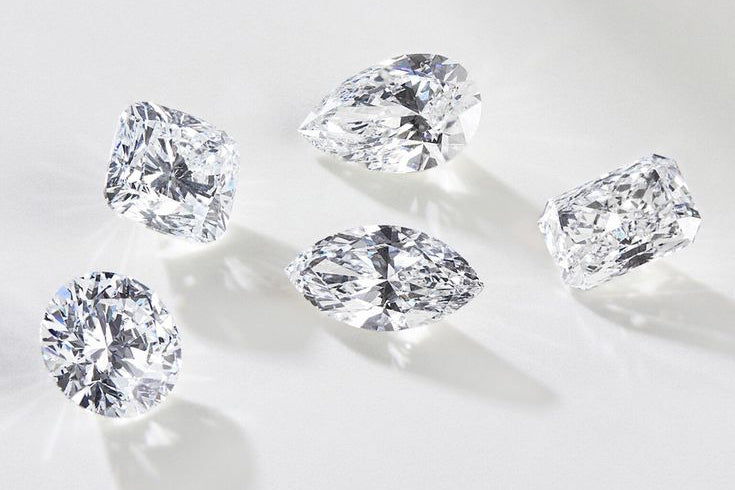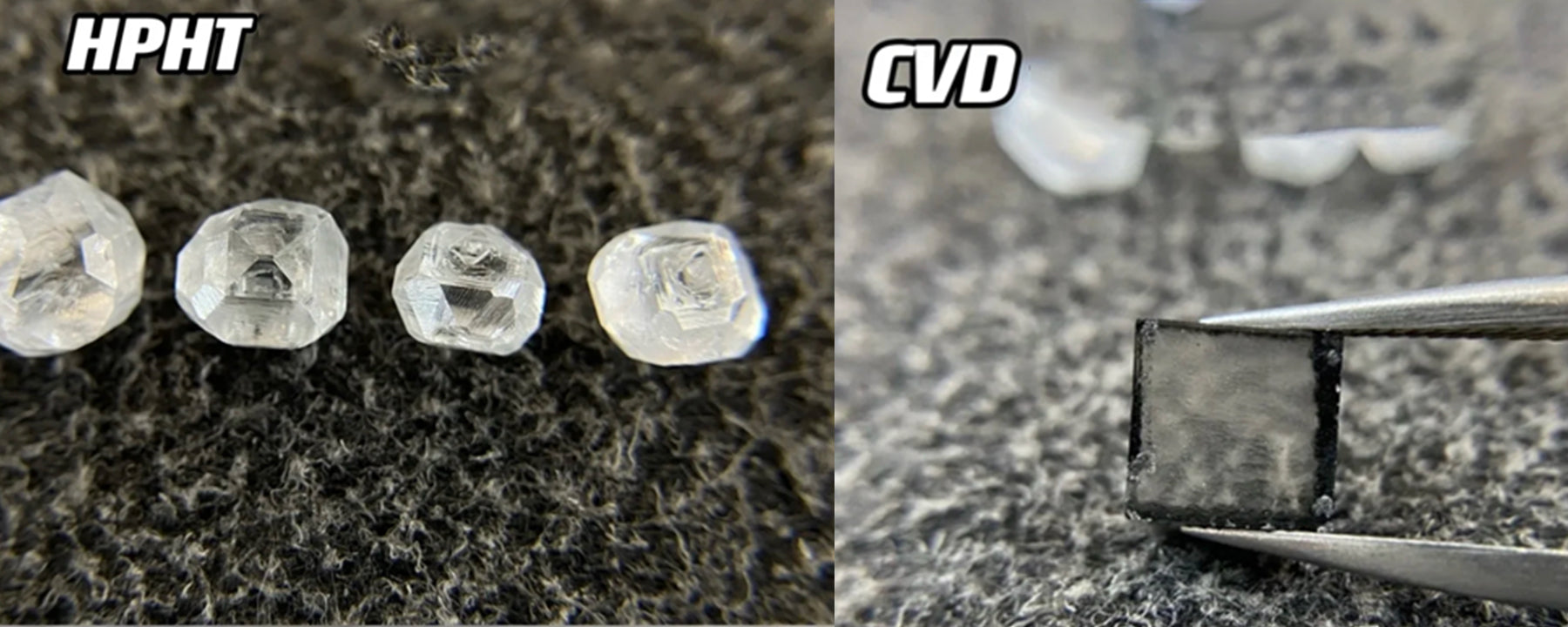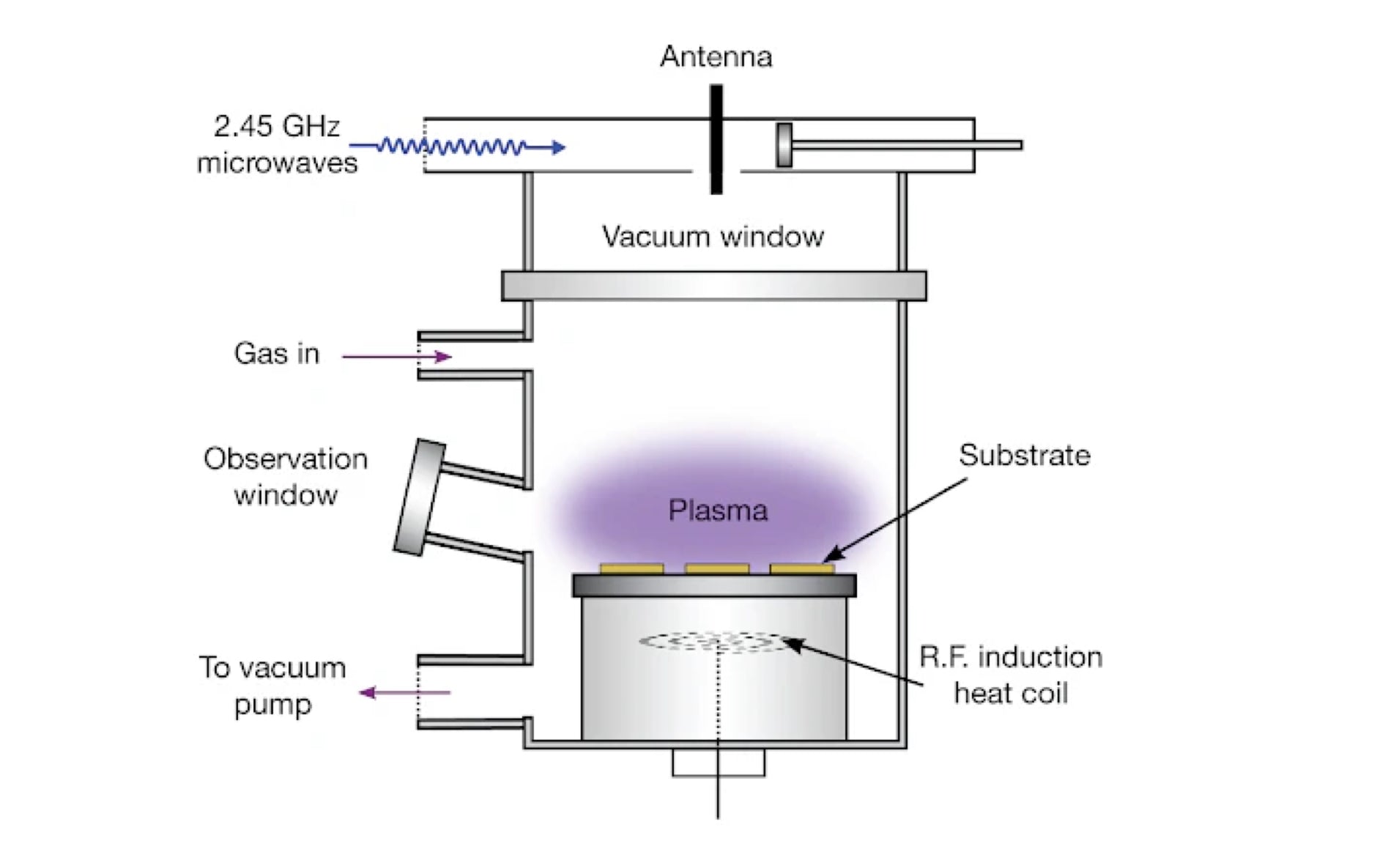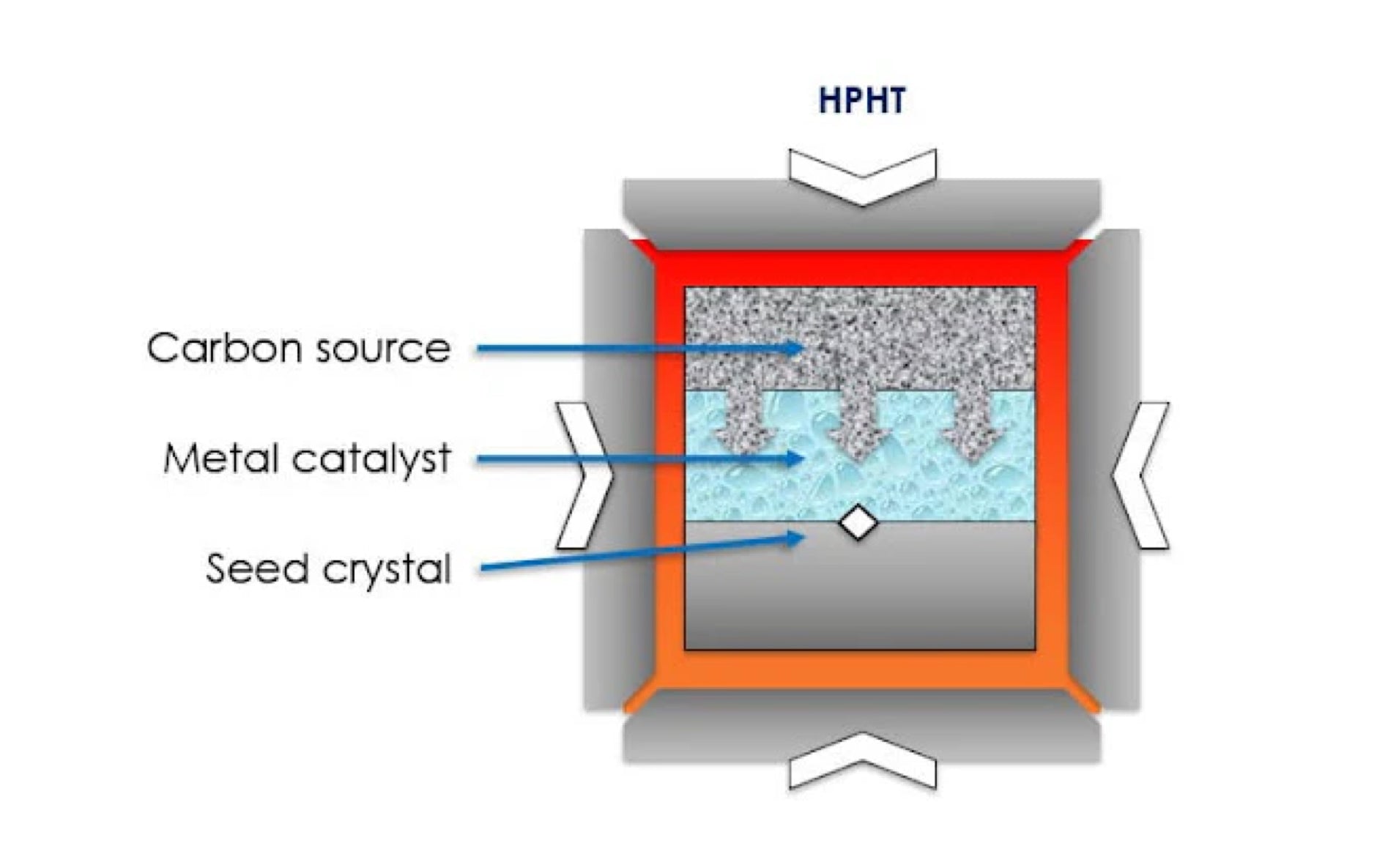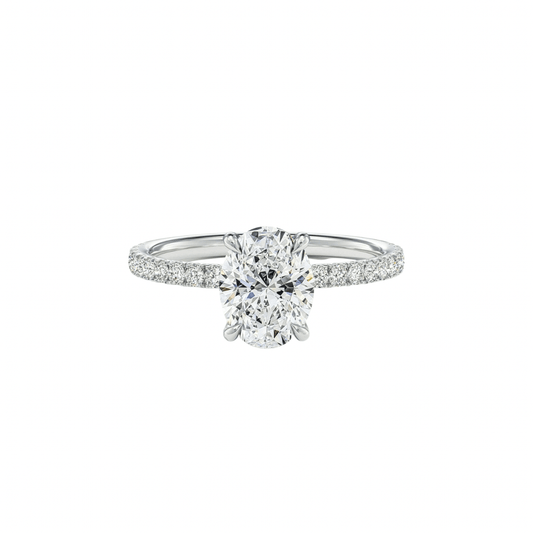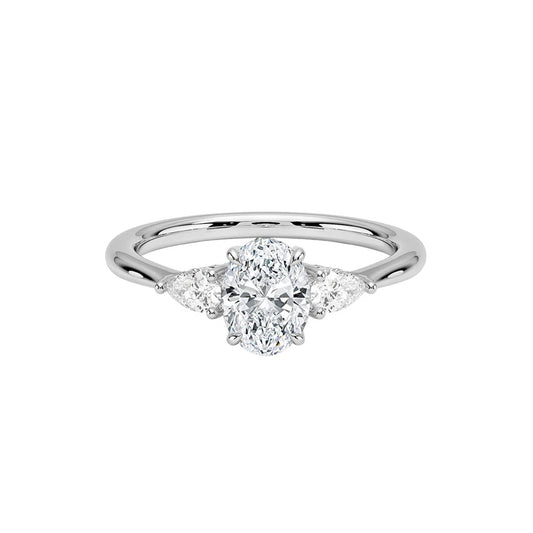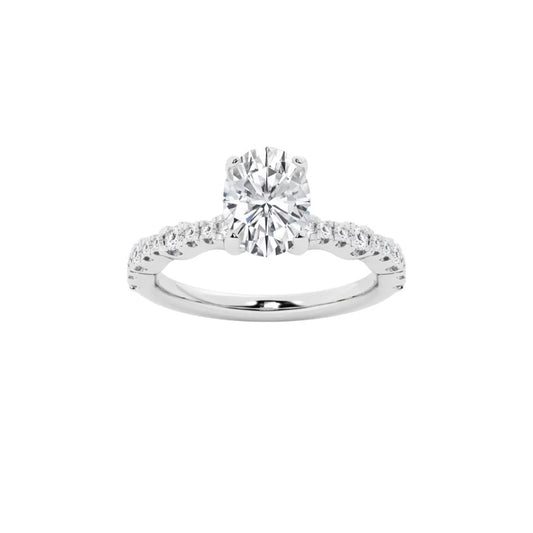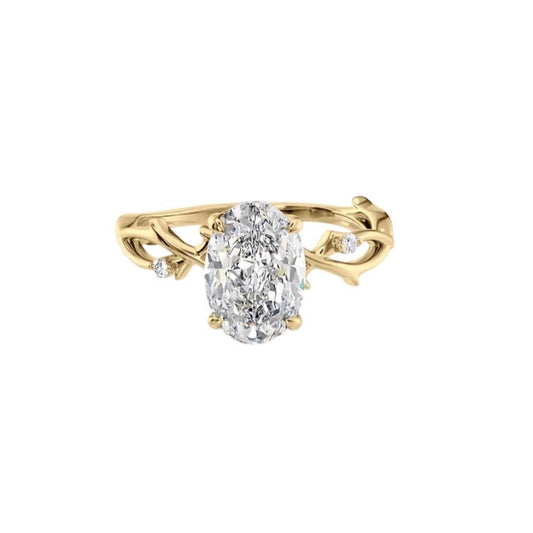Lab created diamonds, also called lab grown, cultured or synthetic diamonds, are real diamonds. They are made in a lab using technology that mimics how natural diamonds form in the Earth. These diamonds are chemically the same as mined diamonds. They look the same and have the same physical properties. They are genuine diamonds, not imitations or artificial gemstones.
Lab created diamonds are more sustainable. They don’t involve destructive mining or raise concerns about conflict diamonds. This makes them a more environmentally friendly and ethical choice.
Main Types of Lab-Grown Diamonds
There are two ways to grow lab-grown diamonds. These methods are widely used in the market today.
1. HPHT Diamond (High Pressure High Temperature)
Diamonds are made using graphite or diamond seed crystals. The crystals go into a machine. The machine produces high heat and pressure. This process mimics the conditions inside the Earth to form diamonds.
2. CVD Diamond (Chemical Vapor Deposition)
Carbon atoms are placed on tiny diamond seeds. Plasma heating helps the carbon stick to the seeds. The carbon builds up layer by layer to create diamond crystals.
How Do CVD and HPHT Created Diamonds?
The working principles of CVD involve chemical vapor deposition. Meanwhile, high temperature and high pressure methods function differently. Both rely on specific techniques to achieve results.
Chemical Vapour Deposition (CVD)
To create a CVD diamond, a small, typically lab grown diamond seed is placed in a chamber and exposed to a carbon-rich gas, such as methane. A plasma torch breaks down the gases and the resulting carbon atoms settle on the surface of the seed crystal, gradually building up a layer of diamond. A useful metaphor is when snowflakes collect on the ground and are then compressed to make snow. The result with CVD is a lab created diamond that has "this Laboratory Grown Diamond was created by chemical vapour deposition (CVD) growth process" written on its International Gemological Institute (IGI) gem certification.
High Pressure, High Temperature (HPHT)
HPHT's cutting-edge technology creates lab-grown diamonds. Scientists begin creating HPHT diamonds with a small piece of pure carbon. This carbon is then placed into a chamber that is subjected to extreme pressure and heat (typically around 5.0-6.5 GPa and 1300-1700°C) by one of three manufacturing methods: the belt press, the cubic press, or the ball and socket (BARS) press. Over time, the carbon is slowly converted into laboratory-synthesized diamonds. The resulting rough diamonds are then cut and polished to create fine jewelry.
CVD vs. HPHT: Similarities And Differences
Both CVD and HPHT methods are used in the manufacture of laboratory-grown diamonds. Both methods are very similar and involve the use of temperature and pressure to compress carbon into a diamond structure. In addition, both produce lab-grown diamonds that are much cheaper than mined diamonds and can be made in a wide range of colors and carat weights.
CVD diamond is grown from a gaseous carbon source, while HPHT diamonds are created by compressing carbon powder under extremely high pressure. In addition, while CVD diamonds grow in a cubic shape and have only one growth direction, HPHT diamonds grow in a cuboctahedron shape and have 14 growth directions.
Finally, the CVD method tends to produce diamonds that have fewer inclusions and higher clarity and colour grades than HPHT as it does not involve metal. However, despite these differences, CVD and HPHT diamonds are equally valuable and are identical if they have matching colour and clarity grades.
A GuideTo Caring For Lab Grown Diamonds
1. Daily maintenance tips
- Avoid knocks and scratches. Avoid wearing your diamond jewelry during heavy lifting. Take it off while working out or doing household chores like washing dishes.
- Keep away from chemicals. Cosmetics, perfume, and bleach can damage metal settings. Chlorinated pool water can also harm jewelry. Remove your pieces before contact with these substances.
- Avoid extreme temperature swings. Avoid sudden temperature changes. Don’t go directly from a sauna or hot bath into cold water, or cool down too quickly.
2. At-home cleaning — safe steps (most common)
Who it’s for: Light everyday grime (oils, dust).
- Step 1: Mix warm water with 1–2 drops of a mild dish soap or baby shampoo.
- Step 2: Soak the jewelry for 10–15 minutes.
- Step 3: Use a soft-bristled toothbrush to clean around the setting. Gently brush the stone using light strokes.
- Step 4: Rinse thoroughly with clean water and dry with a lint-free cloth; let air dry in a well-ventilated spot.
Note: Do not use ultrasonic cleaners. Avoid high-pressure steam unless a professional says it’s safe.
3. Methods & products to avoid
- Household bleach, ammonia, or high-concentration acids/alkalis.
- Traditional silver polishing compounds (may harm the metal setting) or abrasive polishing pastes.
- Hard cleaning tools such as nail brushes or steel wool.
4. Storage & transport recommendations
- Store pieces separately. Store each item in a soft pouch. Use a jewelry box with compartments to avoid rubbing and scratches.
- If not worn long-term: Take off your jewelry and store it in a dry, dark place. Keep the certificate and receipt together in a safe folder.
- When traveling: Use a padded jewelry case or the original box. Avoid putting pieces in a makeup bag where they might touch hard items.
5. Professional maintenance & inspection frequency
- Every 6–12 months: Have a jeweler check your jewelry for loose settings. Get it cleaned professionally. Polish it if needed.
- If you notice problems: If a stone feels loose or falls out, stop wearing the jewelry. Check for significant wear on the metal. Take it to inspection and repair.
FAQs - Frequently Asked Questions
Q: Can lab-grown diamonds be cleaned the same way as natural diamonds?
Yes. Follow a gentle cleaning method and make sure the setting is secure. Only clean with ultrasonic or steam methods if a professional has inspected it first. Make sure they approve the method.
Q: How often should I have a professional inspection?
We recommend a routine check and professional cleaning every 6–12 months. If you wear the piece often or it gets bumped frequently, have it checked more often.
Q: Can I wear my diamond ring while swimming?
Not recommended. Pool chemicals, such as chlorine, can damage metal settings. This increases the chance of stones coming loose.
Q: Do lab-grown diamonds need special storage?
Yes. Store each piece in a soft pouch. You can also use a jewelry box with compartments. This will help prevent rubbing, scratches, and contact between pieces.
SHOP NOW
-
1 Carat Hidden Halo Oval Diamond Ring In 14K White Gold
Regular price From $1,600.00 USDRegular priceUnit price per -
1 Carat Oval Diamond Three Stone Engagement Ring In 14k White Gold
Regular price From $1,500.00 USDRegular priceUnit price per -
1.2 Carat Oval Diamond Engagement Ring In 14K White Gold
Regular price From $1,600.00 USDRegular priceUnit price per -
1.2 Carat Oval Solitaire Engagement Ring In 14K Yellow Gold
Regular price From $1,500.00 USDRegular priceUnit price per

